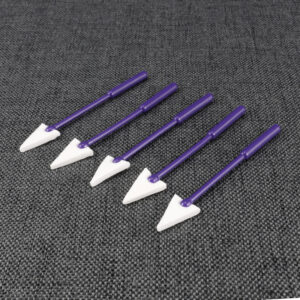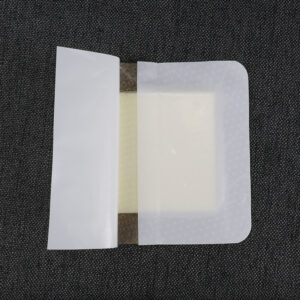What are PVA Absorbent Sponge Dressings?
PVA (polyvinyl alcohol) absorbent sponge dressings are innovative materials specifically designed for effective wound management. Comprised primarily of polyvinyl alcohol, these sponge dressings exhibit unique structural and chemical properties that enhance their suitability for various types of wounds. The composition of PVA contributes to the sponges being highly absorbent, allowing them to manage exudate effectively and maintain a moist environment conducive to healing.
The structuring of PVA absorbent sponge dressings involves a three-dimensional porous matrix, which provides cushioning and promotes cellular infiltration while facilitating fluid absorption. This multidimensional structure ensures that when the dressing comes into contact with a wound, it absorbs excess fluids without adhering to the wound bed, minimizing trauma upon removal. Such characteristics make these dressings particularly beneficial in clinical settings where minimizing pain and enhancing patient comfort is critical.
One of the standout features of PVA sponge dressings is their biocompatibility. They are formulated from medical-grade polyvinyl alcohol, which is recognized for its inert nature and low allergenic potential. This property ensures that the dressing can be used on various patients without significant risk of adverse reactions. Additionally, the cushioning effect provided by the sponge material offers protection to the wound against external trauma, thus aiding in the overall healing process.
The manufacturing process for these dressings involves specialized techniques to achieve the desired properties, ensuring that they meet stringent medical standards. In contrast to other dressing types, such as traditional gauze or hydrocolloids, PVA absorbent sponges provide superior absorbent capabilities and reduced adherence to wounds, addressing common complications experienced with conventional dressings. By understanding the unique characteristics and benefits of PVA absorbent sponge dressings, healthcare providers can make informed decisions regarding their use in wound care management.
Applications and Benefits of PVA Absorbent Sponge Dressings
PVA (Polyvinyl Alcohol) absorbent sponge dressings are versatile tools in the medical field, frequently utilized for their unique properties in various wound care scenarios. One of the primary applications of PVA sponge dressings is in the management of acute and chronic wounds. These dressings are capable of absorbing exudate and maintaining a moist environment, which is conducive to optimal healing. In both hospital settings and home care, PVA dressings are applied to surgical wounds, burns, pressure ulcers, and other types of skin injuries.
Post-surgical applications are particularly notable, as PVA dressings can enhance healing while minimizing the risk of infection. The intrinsic design of these dressings allows for adequate moisture retention, which is essential for promoting cellular regeneration. Furthermore, they can be easily shaped and resized to fit various wound types, making them applicable in a wider range of clinical situations.
Aside from their broad range of applications, PVA absorbent sponge dressings offer numerous benefits that significantly improve patient outcomes. One key advantage is their ability to minimize pain during dressing changes, which can often be a distressing experience for patients. The gentle adherence of PVA to wound surfaces reduces trauma upon removal, thus alleviating discomfort.
Additionally, these dressings provide an optimal environment for healing due to their unique compression and expansion characteristics. When they come into contact with exudate, PVA dressings expand to absorb fluid, once saturated, they compress and can help in exerting gentle pressure on the wound, thereby promoting better blood flow to the affected area.
Ease of use and patient comfort are further compelling reasons for the adoption of PVA absorbent sponge dressings in clinical practice. Clinicians can apply these dressings with minimal training, while patients appreciate the breathable material that contours nicely to body curves, enhancing their overall experience and compliance with treatment protocols.



